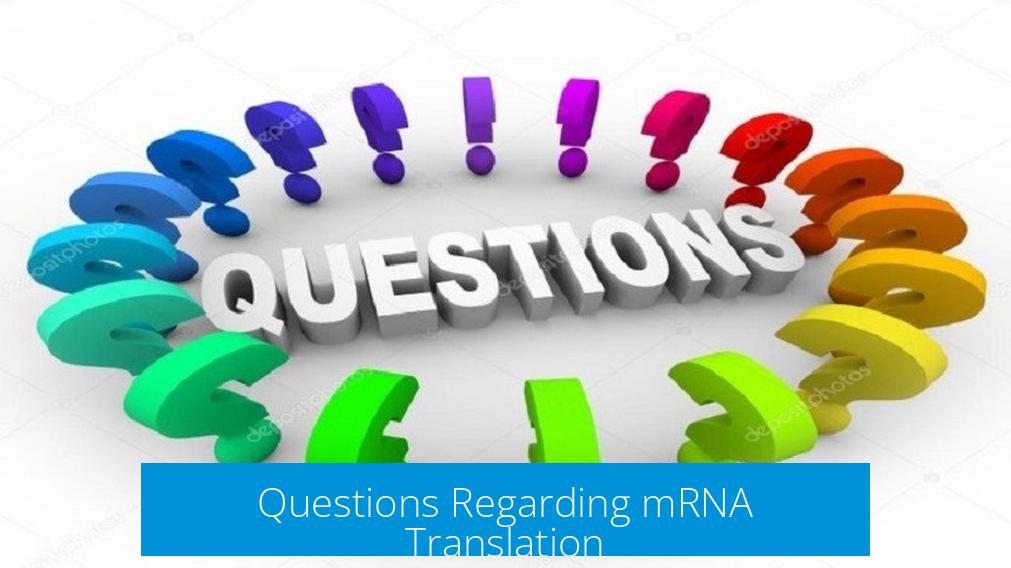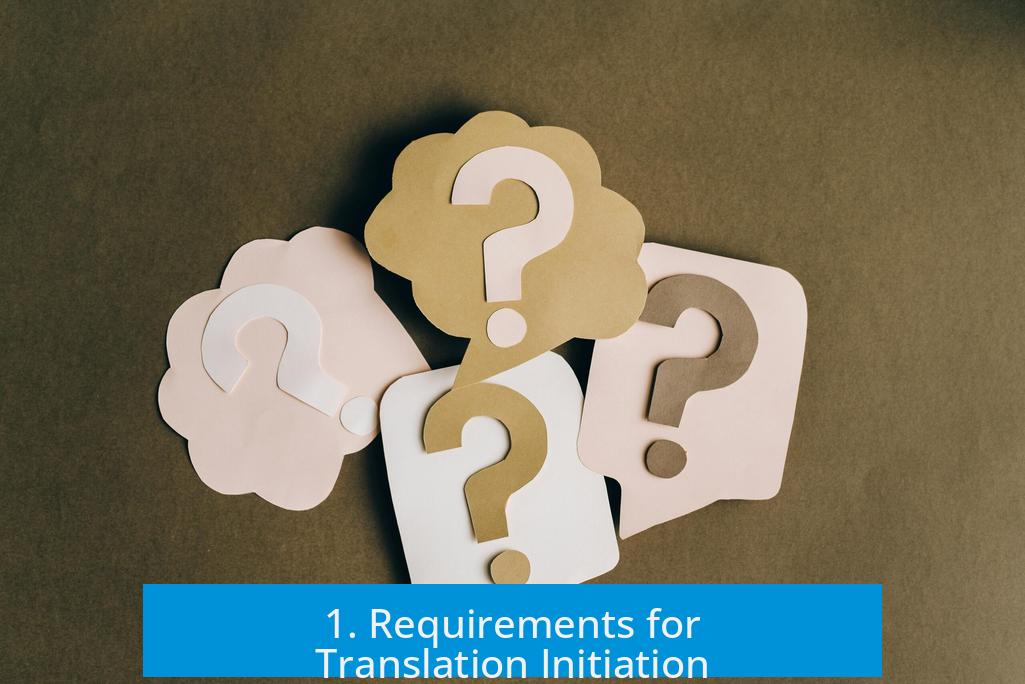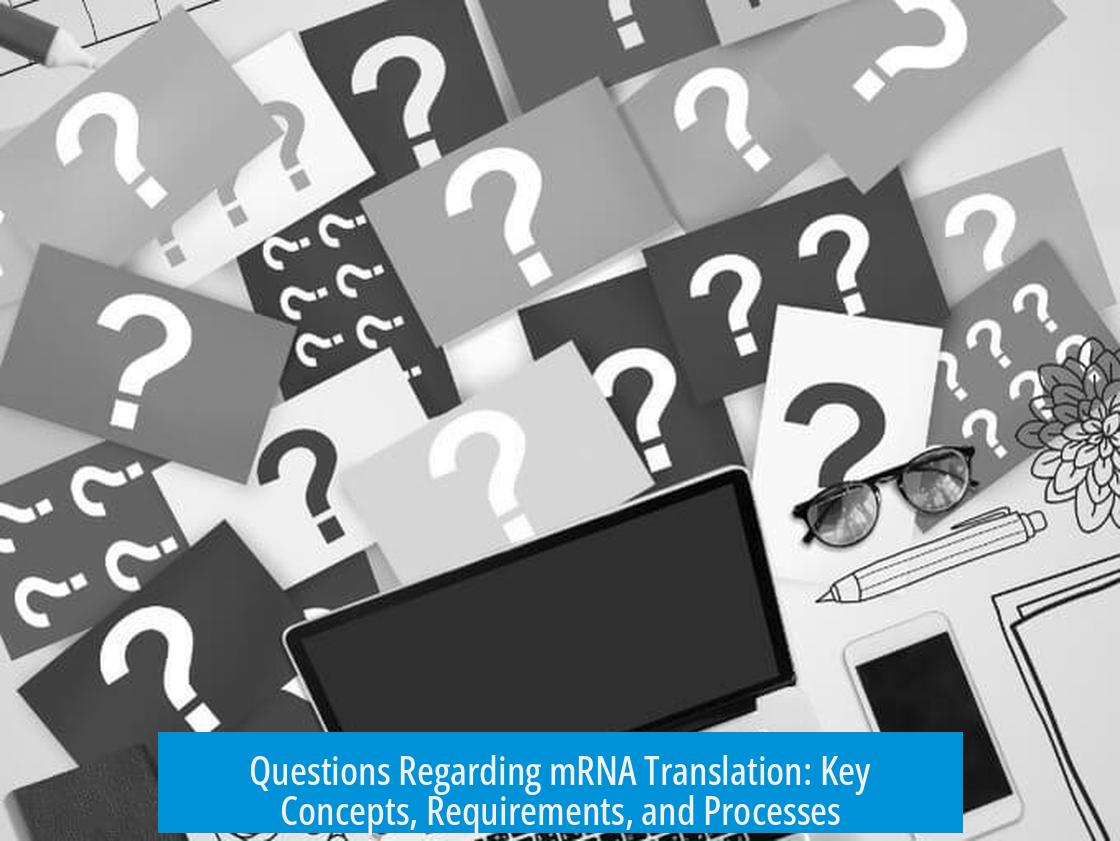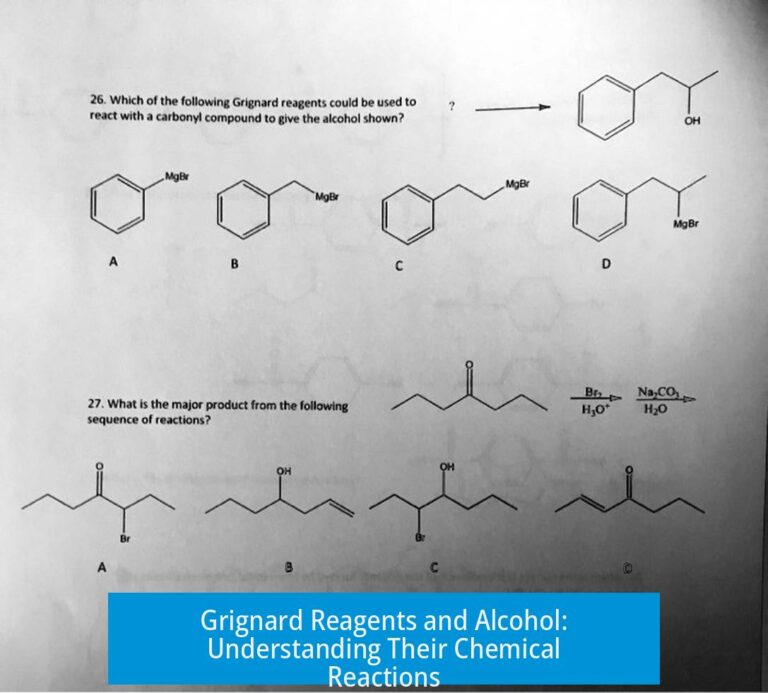Questions Regarding mRNA Translation

mRNA translation requires a specific mRNA structure and regulatory proteins to initiate and proceed. Translation begins only at the correct start site on the mRNA, controlled by proteins that recognize the mRNA’s 5′ cap and the start codon region. Without this, translation cannot initiate properly.
1. Requirements for Translation Initiation

The start of translation depends on the presence of the mRNA’s beginning portion. The 5′ cap structure is essential, as translation factors bind here to recruit the ribosome. Proteins binding near the start codon guide the ribosome to the correct initiation site. Translation cannot start at random positions and relies on these protein-RNA interactions.
2. Elongation and Termination of Translation
Once initiated, the ribosome moves along the mRNA, elongating the polypeptide chain until it reaches the transcript’s end. If the mRNA lacks a proper stop codon, the ribosome may stall. This stalling can create truncated proteins that may not fold correctly or function effectively.
3. mRNA Stability and Degradation Affecting Translation
mRNA molecules are vulnerable to degradation by RNases. Mature mRNAs avoid this by associating with proteins bound to the 5′ cap and the poly-A tail, protecting them from enzymatic attack. If either end is missing, the mRNA is rapidly degraded. Additionally, surveillance systems like nonsense-mediated decay target defective mRNAs to prevent production of faulty proteins.
4. Structural Requirements and mRNA Configuration for Translation
mRNA does not remain a linear chain but forms a closed-loop structure. The 5′ cap and 3′ poly-A tail interact through binding proteins, enhancing mRNA stability and facilitating efficient translation. This circularization aids ribosome recycling and sustained translation. Fragments missing these elements fail to be translated or are quickly degraded.
Summary of Key Points
- Translation requires the mRNA’s 5′ cap and the start codon region present together.
- Proteins regulate initiation by binding mRNA ends and nearby sequences.
- Elongation proceeds until the ribosome encounters a stop codon or transcript end.
- Missing stop codons stall ribosomes, leading to incomplete or faulty proteins.
- mRNA stability depends on proteins protecting the 5′ cap and poly-A tail.
- Closed-loop mRNA structure is necessary for stability and translation efficiency.
- Degradation pathways eliminate defective or incomplete mRNAs.
What is required for the initiation of mRNA translation?
Translation starts only if the beginning portion of the mRNA is present. Specialized proteins must bind to the mRNA and regulate where translation begins, preventing it from starting randomly.
How does translation elongation and termination occur?
After initiation, the ribosome builds the polypeptide until the mRNA transcript ends. If the transcript lacks a proper stop signal, the ribosome may stall, potentially producing a faulty protein.
How does mRNA stability influence translation?
Mature mRNA is protected from degradation by proteins attached to its 5′ cap and poly-A tail. Without these, RNases degrade the RNA, and nonsense mediated decay may be triggered.
Why does mRNA form a closed loop during translation?
The 5′ cap and poly-A tail interact through binding proteins, forming a circular mRNA. This structure is essential for stability and efficient translation. Fragments missing either end are not translated.
What happens if mRNA is fragmented or missing key structures?
Fragmented mRNA is quickly degraded by RNases. The absence of the 5′ cap or poly-A tail means the mRNA cannot form the closed loop and translation will not proceed.





Leave a Comment